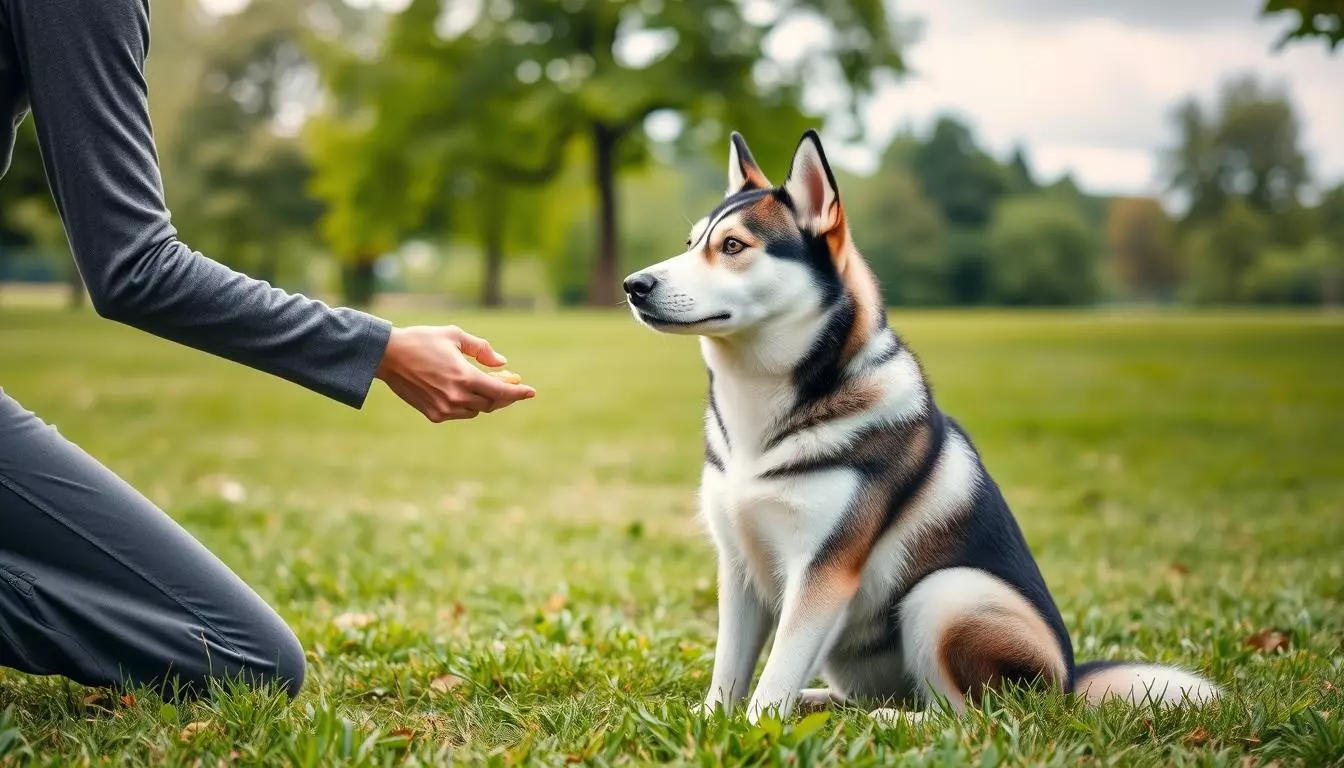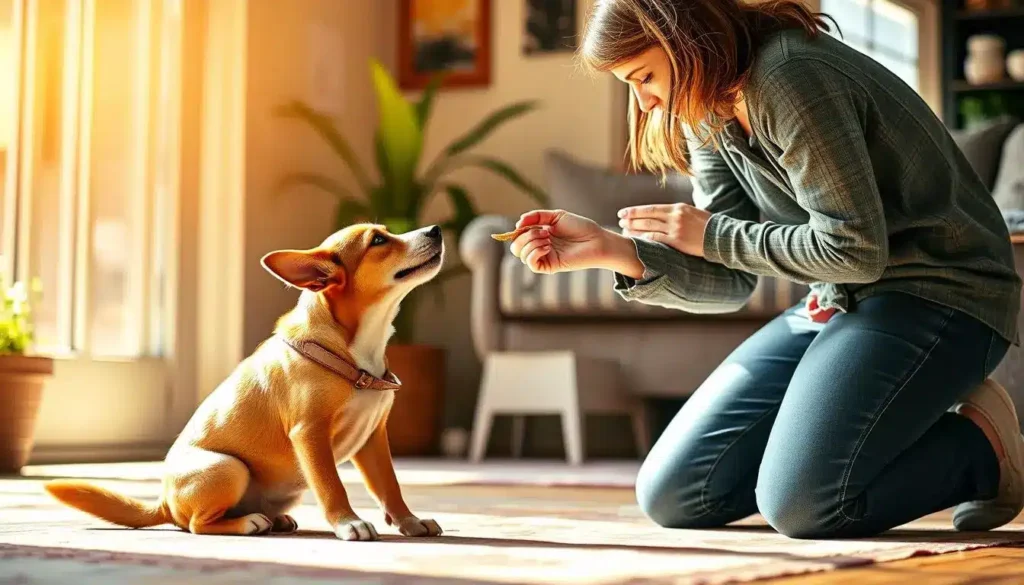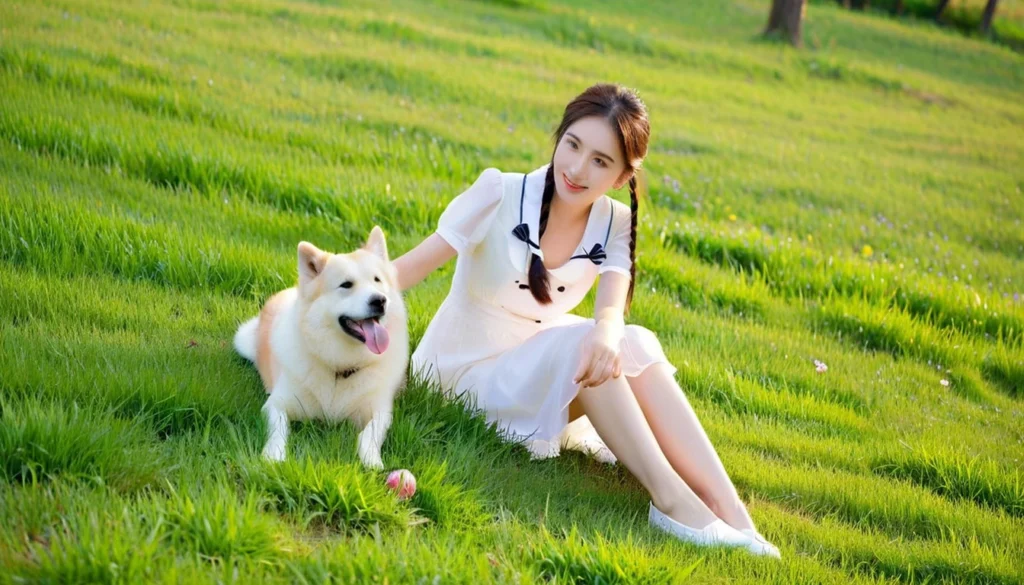Getting a Siberian Husky was like welcoming a whirlwind of energy and joy. Their striking blue eyes and playful nature capture hearts like few others. Yet, I soon found that training a Husky is more than just teaching them commands. It's a journey filled with patience, love, and understanding.
As I started this journey, I found key tips and tricks that made my bond with my Husky special. With the right training methods and positive reinforcement, I learned to appreciate their unique spirit. Let's dive into the important parts of husky training, making sure our furry friends become the well-behaved companions they can be.
Key Takeaways
- Training a Husky is a rewarding experience that builds a strong bond.
- Understanding a Husky's unique traits is crucial for effective training.
- Positive reinforcement is a key method in dog training.
- Consistency in commands helps reduce confusion for your Husky.
- Engaging both mental and physical exercises is essential for a well-behaved dog.
Understanding the Siberian Husky
To train a Siberian Husky well, knowing their unique traits is key. These dogs are friendly, have a striking look, and love to be around people. Their history as sled dogs gives them a strong pack mentality and a desire to join in on activities. Understanding this helps me train them better and build a stronger bond.
Unique Traits of Huskies
Huskies have traits that make them stand out. They are smart but also independent, which can make training tricky. Here are some key characteristics:
- Strong instincts: Huskies often have a natural prey drive.
- Playfulness: They love to play and enjoy games.
- Affectionate nature: Huskies bond strongly with their family.
- Vocal nature: Many huskies communicate through howling.
Energy Needs and Exercise Requirements
It's important to know how much energy huskies need and how much exercise they require. They were bred for endurance, so they need regular activity to stay happy and healthy. Without enough exercise, they might dig or bark too much. Here are some activities they enjoy:
- Long walks or runs to burn off energy.
- Interactive games with toys or frisbees.
- Agility training to keep their minds and bodies active.
The Importance of Early Training
Starting early training for your Husky is key to a well-behaved pet. The best time to start is between 8 to 10 weeks old. This period is vital for learning good habits and behaviors.
Training during these weeks helps teach essential commands. These commands will help your dog throughout their life.
Ideal Age for Training a Puppy
The ideal age for training a puppy is when they are eager to learn. Training early helps build a strong bond and communication. Puppy minds soak up information quickly.
Starting training early boosts confidence. It ensures your Husky grows into a well-adjusted adult.
Socialization Opportunities
Providing socialization opportunities is also crucial. It's important to expose your puppy to different environments and people. This helps prevent fear or aggression later on.
I introduce my Husky to other dogs, new places, and people. This helps them feel confident and adaptable.
| Socialization Activities | Benefits |
|---|---|
| Park Visits | Exposure to other dogs and people |
| Training Classes | Structured learning with other puppies |
| Home Visits | Familiarization with different environments |
| Car Rides | Getting used to traveling |
| Public Outings | Learning to behave in diverse settings |
By focusing on early training and socialization, I help my Husky become confident and obedient. The early stages of training are crucial for a rewarding partnership and enjoyable experiences.
How to Train a Husky Dog
Training a husky dog needs a mix of good techniques and a positive way. Knowing what makes huskies special helps us shape their behavior. It also strengthens our bond.
Training Techniques and Best Practices
Start by using proven training methods. Using the same commands helps my husky know what I want. Short training sessions help them remember better and stay focused.
Having a routine is key. It gives structure and makes our training sessions predictable.
Positive Reinforcement Approaches
Positive reinforcement is a top choice for me. Giving treats, praise, or playtime for good behavior rewards them. It makes learning fun and builds trust.
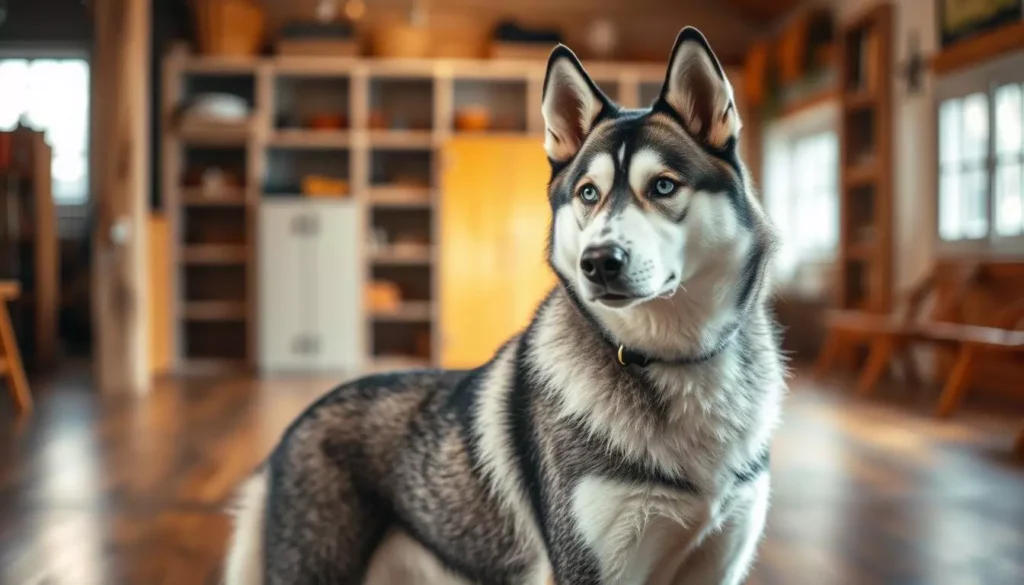
Basic Obedience Training for Huskies
Basic obedience training is key for Huskies. It starts with teaching "Sit" and "Stay." These commands help keep things in order and prepare for more training. The "Come" command is also crucial for safety and better communication.
First Commands to Teach: Sit and Stay
First, I teach the "Sit" command. I use a treat to lure my Husky into sitting. I hold the treat above their nose and move it back, rewarding them when they sit.
The "Stay" command is a bit harder. I start by having my Husky sit and then take a step back. I gradually increase the distance and time to make it stick.
Importance of the Recall Command: Come
The recall command, "Come," is very important. It keeps my Husky safe, especially in open spaces. I practice it in a safe area, using treats and praise to encourage them to come back quickly.
By doing this often, I make sure my dog responds well. This helps with their overall obedience.
Utilizing Positive Reinforcement
Training my husky is all about positive reinforcement. This method strengthens our bond and encourages good behavior. It's all about using the right treats to keep my dog excited and eager to learn.
Creating a rewarding environment makes training fun for both of us. It shows that my efforts are worth it every time my husky learns something new.
Identifying Motivating Treats
Finding the right treats is key. I have a few favorites:
- Soft training treats that are easy to chew
- Small pieces of cooked chicken or turkey
- Cheese, a favorite among many huskies
- Vegetable snacks like green beans, which are healthy and crunchy
Switching up these treats keeps my husky interested and motivated. Understanding what works best for my dog is crucial.
Creating a Rewarding Environment
I make sure to praise and reward my husky right away for good behavior. This creates a positive cycle where good actions get exciting rewards. It helps my dog learn faster and remember what I teach.
Being consistent is important. It shows my husky that good behavior always pays off. This makes training more effective and enjoyable for both of us.
The Role of Consistency in Training
Consistency is key in training my Husky. A routine helps my dog know what to expect. This makes learning easier and more fun.
Establishing a Routine
A daily routine is essential for training my Husky. I schedule times for meals, training, and play. This makes my dog eager to join in.
Training at the same time every day keeps my dog's energy up. It also helps them learn faster.
Reducing Confusion Through Clear Commands
Clear commands are important for my Husky's understanding. Everyone in the family uses the same words. This avoids confusion and helps my dog know what to do.
Using a few consistent commands makes communication better. It helps us work together smoothly.
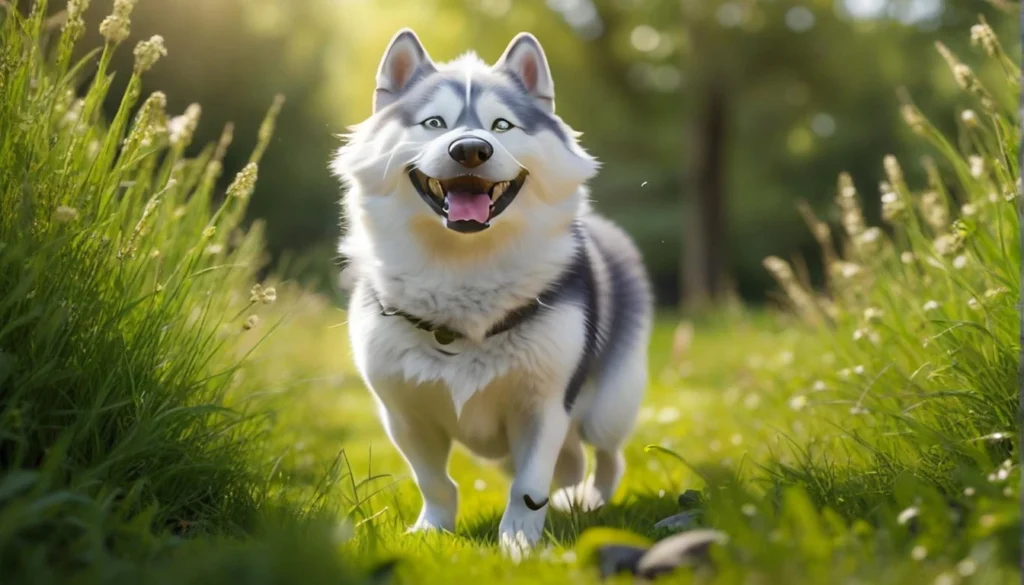
Addressing Common Behavioral Issues
Dealing with common behavioral issues in my Siberian Husky is key for a peaceful home. Knowing the cause of each problem helps in training. Two big issues I face are excessive barking and digging, each needing a unique solution.
How to Get a Husky to Stop Barking
To stop my Husky from barking, I first find out what makes them bark. Things like strangers or loud sounds often trigger it. Giving them enough exercise and social time helps calm them down.
Training them to be quiet is also important. I reward them when they're quiet. This shows them that being calm is good.
Managing Excessive Digging
Managing digging is about keeping my Husky busy. Boredom leads to digging, so I make sure they're active. I set up a digging area in the yard for playtime.
When they dig there, I praise and reward them. This teaches them to dig in the right place. I also give them puzzle toys and games to keep their mind busy and prevent digging elsewhere.
By understanding and tackling these issues, my Husky becomes happier and better behaved.
Engaging Your Husky with Mental Stimulation
Keeping my Husky happy and well is key. The right activities are both fun and challenging. Interactive games and puzzle toys keep them engaged and improve problem-solving skills.
These activities prevent boredom and help my Husky thrive mentally and emotionally.
Interactive Games and Puzzle Toys
Interactive games and puzzle toys are great for my Husky's mind. Many brands offer fun products that challenge dogs to solve problems. I enjoy seeing my dog solve puzzles like the Nina Ottosson by Outward Hound.
Using these toys regularly keeps my Husky entertained and sharp.
Incorporating Obedience Training Sessions
Obedience training adds mental exercise to our daily routine. Practicing commands like "sit," "stay," and "come" helps my dog learn. It also keeps their mind active.
Adding fun, like treats, makes training enjoyable for both of us. This mix of training and toys is a great way to keep my Husky's mind sharp.
Varying activities is important to avoid boredom. Mixing games, puzzle toys, and training keeps things exciting. This ensures my Husky stays engaged and happy.
Physical Exercise for Huskies
To keep my Husky happy and healthy, I focus on physical exercise. These dogs love high energy activities. Daily exercise is key for their well-being.
Regular physical activity keeps them fit. It also prevents behavioral issues from boredom or excess energy.
Daily Exercise Recommendations
I recommend at least 1 to 2 hours of exercise daily for Huskies. This can be brisk walks, running, or games that challenge them. A mix of structured and unstructured time is best.
Getting my Husky outside in nature is perfect. They can run freely in fenced areas, releasing their energy.
Activities that Suit a Husky's Energy Level
Choosing the right activities for my Husky is important. They need physical and mental challenges. Here are some favorites:
- Agility training courses to challenge them physically and mentally.
- Interactive play sessions, especially games like fetch, which let them sprint.
- Hiking trails that offer exercise and new scents to explore.
- Biking alongside me while they run, letting them use their energy fully.
By following these tips, I keep my pet engaged and meet their energetic needs.
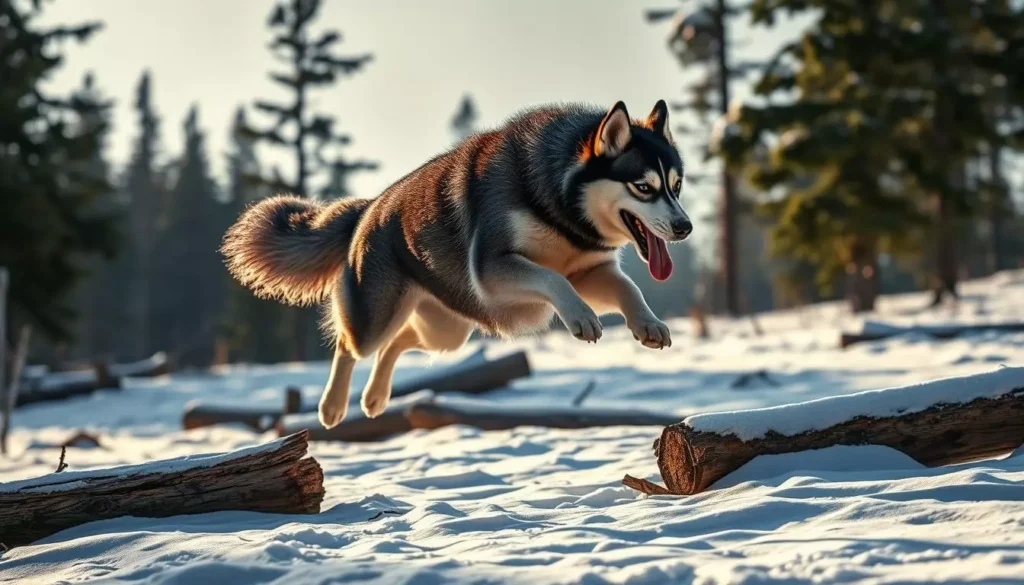
Advanced Training Techniques
Once my Husky has learned the basics, we can explore more advanced training. Training for sports is a great way to keep us both engaged. Activities like agility, sledding, or pulling use my Husky's natural talents and energy.
Training Your Husky for Sports
Training for sports boosts my Husky's physical and mental health. Key steps include:
- Choosing sports that match my Husky's abilities.
- Teaching specific commands for each sport.
- Practicing regularly to improve skills.
Using the right training methods makes our sessions fun and effective. High-energy exercises are key to keeping my Husky happy and healthy.
Off-Leash Training Considerations
Off-leash training lets my Husky explore freely. To make it work, I follow these steps:
- Start in safe places to avoid distractions.
- Use treats or toys to teach recall commands.
- Practice in different places to prepare for real life.
Regular off-leash training boosts my Husky's confidence. Advanced techniques help us enjoy outdoor adventures safely and reliably.
| Training Type | Focus | Benefits |
|---|---|---|
| Sports Training | Agility, Sledding, Pulling | Increased physical fitness, mental stimulation |
| Off-Leash Training | Recall, Commands | Enhanced freedom, improved reliability |
The Importance of Socialization
Socialization is key to raising a well-rounded Husky. It shapes their behavior and temperament. By letting my Husky meet different pets and people, I help them become friendly and confident.
Introducing Your Husky to Other Pets
Introducing my Husky to other pets requires patience. I aim for gradual, positive interactions. This helps create a friendly environment.
I look for places where dogs are well-vaccinated for safe playdates. Monitoring these interactions helps my dog see other animals as fun, not scary. This reduces aggression and boosts sociability.
Meeting New People and Environments
Exposing my Husky to new places and people broadens their experience. I take her to parks, pet stores, and community events. I ensure calm introductions, letting her approach new faces at her own speed.
These experiences help build her confidence and reduce anxiety in new situations. Following these tips can greatly improve her social behavior.
How to Train a Husky Puppy Not to Bite
Training a husky puppy not to bite takes steps and knowing their behavior. Puppies use their mouths to explore, which can lead to nipping. Seeing this as a normal phase helps in addressing it right. Using good puppy training methods is key to teaching them about boundaries and play.
Understanding Puppy Behavior
Knowing puppy behavior is key for good training. Huskies are full of energy and curiosity, leading to biting. During teething, they bite more to ease pain. Being aware of these behaviors helps me use the right training techniques.
Redirecting Chewing and Nipping
Stopping chewing is vital in teaching a husky puppy not to bite. Giving them the right chew toys helps. When I see them nip or bite, I quickly give them a toy instead. This teaches them what's okay and rewards good behavior.
| Behavior | Response |
|---|---|
| Nipping during play | Redirect to a toy immediately |
| Biting during teething | Provide appropriate chew toys |
| Pulling on clothes | Distract with a game or toy |
| Excessive mouthing | Pause play until calm, then resume |
Being consistent and patient is crucial. With time and effort, I can train my husky puppy not to bite. This ensures a better relationship for both of us.
Long-Term Training Strategies
It's important to have long-term training plans for my husky. This ensures he keeps learning and growing. By practicing commands and learning new tricks, he stays sharp and eager to please.
Developing Lifelong Skills
Teaching my husky lifelong skills takes time and effort. I use different training methods that grow with him. This includes:
- Regularly practicing basic commands
- Introducing complex tricks as he masters simpler tasks
- Offering mental challenges through interactive play
- Engaging him in socialization with other dogs and people
Maintaining Good Behavior Over Time
Keeping good behavior is key for a happy home. Consistency and flexibility are essential. Celebrating small wins keeps us both motivated. My approach includes:
- Establishing a routine that incorporates training sessions
- Celebrating progress with treats and praise
- Being flexible with my training approach based on his responses
- Utilizing effective husky training methods to address any challenges
Can a Husky Be a Service Dog?
Many people ask if a Siberian Husky can be a service dog. Huskies are known for being friendly and smart. But, their independent nature can make training tough. It's important to know the specific training needs for service dogs.
Training Considerations for Service Dogs
Training a Husky as a service dog requires careful attention. Obedience is key. A service dog must follow commands in different places. Start with basic commands and then move to more complex tasks.
Temperament is also crucial. Not every Husky is right for service work. Choosing the right dog is essential.
Regulations and Requirements for Certification
Certification rules vary by state. It's important to check the specific requirements in your area. Certification often includes tests of behavior, skills, and support for the handler.
Specialized training programs can help your Husky meet these standards. If you want a Husky as a service dog, you must understand the training and certification needed.
Conclusion
Training a husky dog is a rewarding journey that needs commitment and patience. I've learned that positive reinforcement is key. It helps me bond with my dog and keeps them well-behaved.
Consistency and socialization are crucial in teaching my dog good manners. Every husky is unique, so I must adjust my training methods. This approach ensures my dog gets the best care.
With the right training and dedication, my dog becomes a beloved family member. Training is more than just teaching obedience. It's about building a strong bond and living in harmony.

